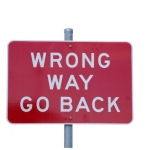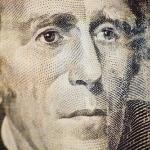NAMP News
Read the latest arts news
There's an old saying that carries renewed meaning these days: Give the people what they want. Brands are furiously creating profiles in social networks such as Facebook and Twitter in the hopes of building engaging communities with customers and giving people what the brands think they want. The main activity in this effort is to spur consumers to "like" and "follow" a brand's Facebook and Twitter streams.
This may be tough to admit, but very few people come to see a show at your venue strictly because of the venue. While engaging in social media as the venue is necessary, it is incomplete as a social media strategy because it fails to leverage the most important (and socially relevant) element of the show: The artist.
The executives behind some of today's most successful products and services--think Steve Jobs, Jeff Bezos, and Michael Bloomberg--all share an ability to experience the world through the eyes and emotions of customers. They use themselves as starting points, asking "What do I hate about this product or process?" They catalog every frustration, time-wasting complication, and source of uncertainty.
A recent study by the National Retail Federation found that "consumers are still pessimistic about buying." The study blames the economy. Brilliant. But really, whose fault is the current state of the economy? The government? The banks? Wall Street? Consumers? Retailers? Manufacturers? We’ve all had a hand in it for sure, but until companies focus on real innovation and bringing customer empathy back to their brands, I fear the markets will continue to be flat.
Our murder mysteries are meant to be fun and entertaining, but this means different things to different people. Occasionally, I will get a concerned caller who is booking tickets that wants to know what audience participation means. Will they be forced up on stage? What if they just want to sit in a chair all evening? What if they want to get their friend up on stage to be involved? What if they want to “star” in the show? What does it all mean?
The debate over museum entry fees was reignited following the news that both the Museum of Fine Arts (MFA) Boston and the Museum of Modern Art (MoMA) in New York—already the country’s most expensive museums to visit—were both raising their general entry fees, from $20 to $25. Earlier this year, the Metropolitan Museum of Art announced a hike in its suggested admission, also from $20 to $25.
Storytelling is an essential aspect of personal branding. The goal is to create a personal brand that resonates with your audience--and to do that, it is important that your brand tells a story. A flat, one-dimensional brand doesn’t give an audience any reason to pay attention. On the other hand, telling your story and letting your brand evolve will naturally generate interest in your personal brand--and by extension, your business. So how do you tell that story?
Whether you are a firm believer, casually interested, or crazy-never-in-my-theater against, “Tweet Seats,” are being experimented with at venues across the world. The segmentation of specific seats in a venue to be used by people with their smartphones *during* performance is only a couple of years old, but has created two sharply divided groups. Let’s not debate either side here.
Chances are if you’ve attended any seminars in the last few years on leveraging new technology, social media, and the mighty power of the Internet, you’ve been told that you and your business must blog. Chances are, you’ve also been told just how easy it is to start a blog and that a monkey can do it. Throw up a page of some kind on any of the popular hosted blog platforms (WordPress, Tumbler, Posterous et.
The fact is, emotions rule. Emotion dominates our decision-making. Reason is just a bit player. Neurologist and author Donald B. Calne tells us, “The essential difference between emotion and reason is that emotion leads to action, while reason leads to conclusions.” Or, as psychiatrist Carl Gustav Jung said, “There can be no transforming . . . of apathy into movement without emotion.”















